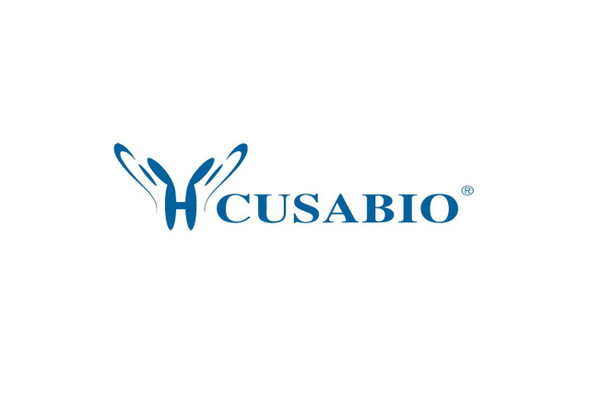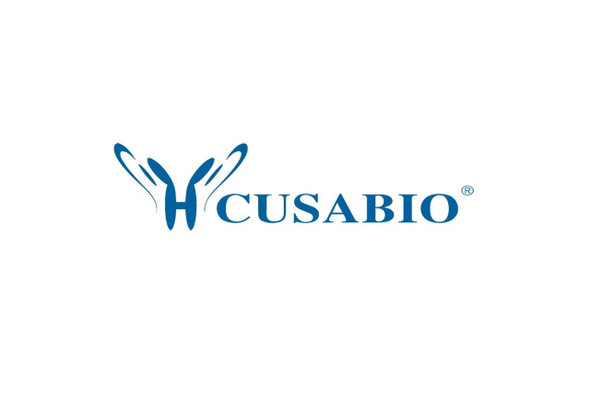Cusabio Virus & Bacteria Recombinants
Recombinant Heteroscodra maculata Delta-theraphotoxin-Hm1a | CSB-EP351577HGUa3
- SKU:
- CSB-EP351577HGUa3
- Availability:
- 3 - 7 Working Days
Description
Recombinant Heteroscodra maculata Delta-theraphotoxin-Hm1a | CSB-EP351577HGUa3 | Cusabio
Alternative Name(s): Heteroscodratoxin-1
Gene Names: N/A
Research Areas: Others
Organism: Heteroscodra maculata (Togo starburst tarantula?(Togo starburst baboon spider)
AA Sequence: ECRYLFGGCSSTSDCCKHLSCRSDWKYCAWDGTFS
Source: E.coli
Tag Info: N-terminal 6xHis-SUMO-tagged and C-terminal Myc-tagged
Expression Region: 1-35aa
Sequence Info: Full Length
MW: 21.5 kDa
Purity: Greater than 85% as determined by SDS-PAGE.
Relevance: Gating modifier toxin that principally inhibits inactivation of the mammalian voltage-gated sodium channel Nav1.1/SCN1A. When tested against human Nav1.1/SCN1A-Nav1.8/SCN10A alpha subunits heterologously expressed in Xenopus oocytes, the toxin inhibits inactivation of Nav1.1 (EC(50)=38 nM), with substantially weaker effects on Nav1.2/SCN2A (EC(50)=236 nM) and Nav1.3/SCN3A (EC(50)=220 nM). The toxin inhibits several subtypes of voltage-gated potassium channels with significantly lower potency than its effects on Nav1.1/SCN1A. It is a moderately potent blocker of Kv2.1/KCNB1, Kv2.2/KCNB2, Kv4.1/KCND1, Kv4.2/KCND2 and Kv4.3/KCND3 and has little effect on Kv1.1/KCNA1, Kv1.2/KCNA2, Kv1.3/KCNA3, Kv1.4/KCNA4, Kv1.5/KCNA5, Kv1.6/KCNA6 and Kv3.4/KCNC4. The binding affinity and subtype selectivity of the toxin is determined by residues within both the S1-S2 and S3-S4 loops of the domain IV voltage sensor. Intracerebroventricular injection into mice elicits convulsions, spasms, tremors and rapid death. When injected into mouse hindpaw, the toxin elicits an immediate and robust response to pain. Intraplantar injection of toxin does not cause neurogenic inflammation or alter sensitivity to heat, indicative of a modality-specific effect on mechanosensitive neurons
Reference: "Novel tarantula toxins for subtypes of voltage-dependent potassium channels in the Kv2 and Kv4 subfamilies." Escoubas P., Diochot S., Celerier M.-L., Nakajima T., Lazdunski M. Mol. Pharmacol. 62:48-57(2002)
Storage: The shelf life is related to many factors, storage state, buffer ingredients, storage temperature and the stability of the protein itself. Generally, the shelf life of liquid form is 6 months at -20?/-80?. The shelf life of lyophilized form is 12 months at -20?/-80?.
Notes: Repeated freezing and thawing is not recommended. Store working aliquots at 4? for up to one week.
Function: Gating modifier toxin that principally inhibits inactivation of the mammalian voltage-gated sodium channel Nav1.1/SCN1A. When tested against human Nav1.1/SCN1A-Nav1.8/SCN10A alpha subunits heterologously expressed in Xenopus oocytes, the toxin inhibits inactivation of Nav1.1 (EC(50)=38 nM), with substantially weaker effects on Nav1.2/SCN2A (EC(50)=236 nM) and Nav1.3/SCN3A (EC(50)=220 nM). The toxin inhibits several subtypes of voltage-gated potassium channels with significantly lower potency than its effects on Nav1.1/SCN1A
Involvement in disease:
Subcellular Location: Secreted
Protein Families: Huwentoxin-1 family, HaTx subfamily
Tissue Specificity: Expressed by the venom gland.
Paythway:
Form: Liquid or Lyophilized powder
Buffer: If the delivery form is liquid, the default storage buffer is Tris/PBS-based buffer, 5%-50% glycerol. If the delivery form is lyophilized powder, the buffer before lyophilization is Tris/PBS-based buffer, 6% Trehalose, pH 8.0.
Reconstitution: We recommend that this vial be briefly centrifuged prior to opening to bring the contents to the bottom. Please reconstitute protein in deionized sterile water to a concentration of 0.1-1.0 mg/mL.We recommend to add 5-50% of glycerol (final concentration) and aliquot for long-term storage at -20?/-80?. Our default final concentration of glycerol is 50%. Customers could use it as reference.
Uniprot ID: P60992
HGNC Database Link: N/A
UniGene Database Link: N/A
KEGG Database Link: N/A
STRING Database Link: N/A
OMIM Database Link: N/A









